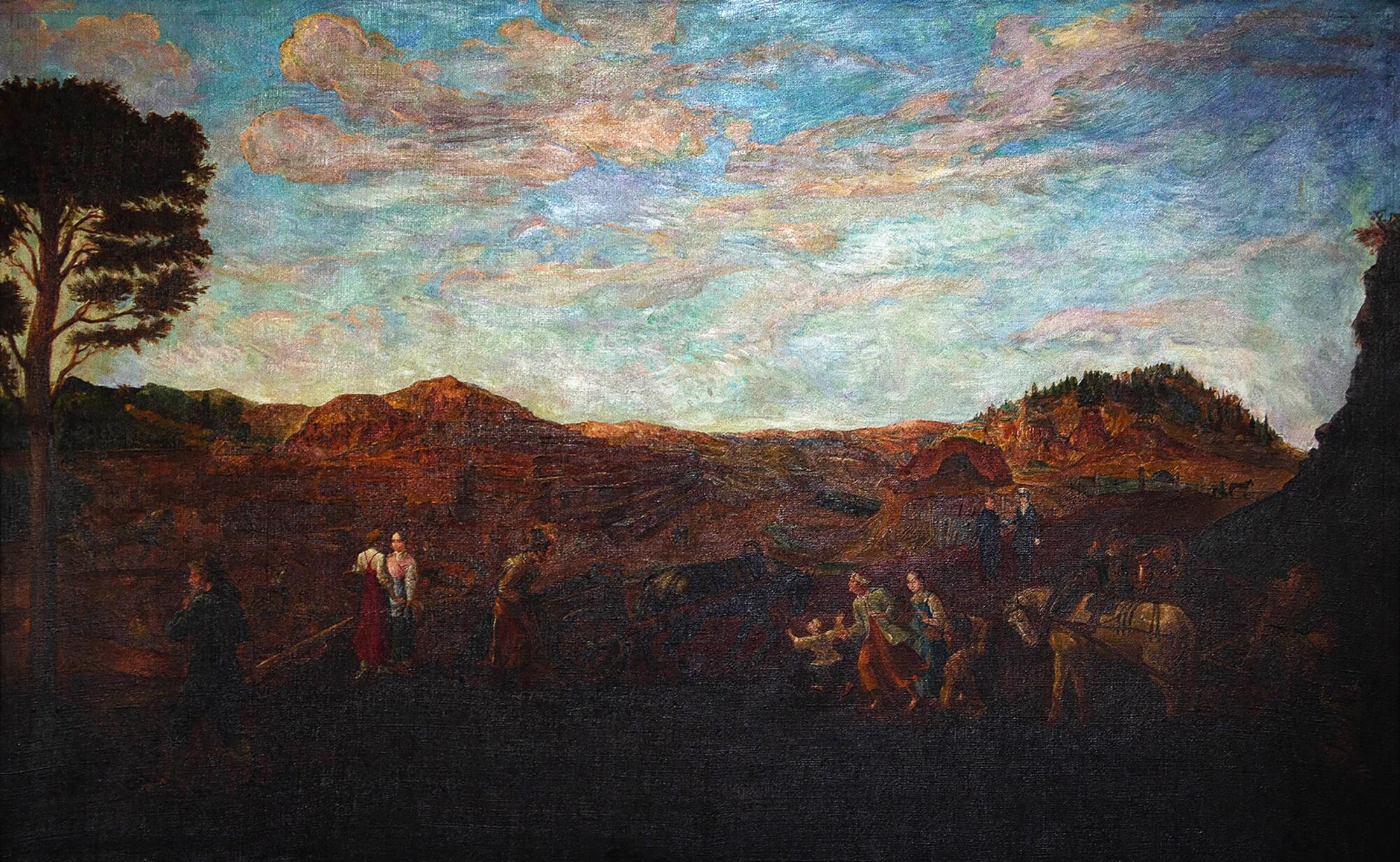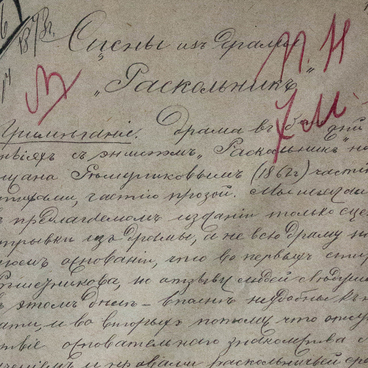A copy of the painting ‘VysokogOrsky Mine’ by artist Pavel Khudoyarov is displayed in the Urals Hall of the Museum. The author of the copy is Yuri Platonov. Pavel Khudoyarov was born in Nizhny Tagil; he was a bondsman at the Nizhny Tagil plant. He studied painting in a varnishing workshop and worked as a painter of iron products and an icon painter. The theme of labor was central to his work. His work Sheet Cutting Shop is considered the first Russian painting showing the labor of industrial workers. Khudoyarov also made copies: primarily paintings by foreign artists. His son Vasily Khudoyarov was his successor.
The museum exhibit recreates work at the Vysokogorsky iron mine in Nizhny Tagil. Iron ore had been mined at the Vysokogorsky deposit since the times of Peter the Great. From the pit, the ore was delivered first by horses, and then by railroad. Ore from the Vysogorsky mine supplied raw materials for the factories of the Nizhny Tagil district. The mine was considered the property of the Demidov family, and after the death of Akinfiy Demidov, it was divided among his sons.
The displayed copy of Pavel Khudoyarov’s painting illustrates the mining theme in the works of 19th-century Urals writer Fyodor Reshetnikov. The writer turned to this theme due to his new appointment: in 1860, he became the head of the mining committee in YekaterinbUrg. The writer described life at the factories as follows: “Go to the Kama, to Perm… Go to any mining plant: the poor people suffer, they suffer from their superiors: clerks, foremen, shiftmen”.
In the mid-1860s, Reshetnikov visited Perm, Solikamsk, Usolye, Cherdyn, and Yekaterinburg, where he collected materials for future works about miner. The trip resulted in three novels about the life of workers in the times when serfdom was abolished: “Miners”, “The Glumovs”, “Someplace Better”. Serfdom and exploitation were the main themes of these novels. According to the literary critic Ivan Veksler, “The historical accuracy of Reshetnikov”s narration… is flawless: it shows the standard of living, whereby… a tallow candle is a luxury; it shows the worker’s lack of rights and the limitless tyranny of the owner’s servants, who were in sole control of the life and health of the worker, his family’s well-being, the honor of his wife and daughter’. These novels reflect the fate of workers and their families in the Urals. The writer showed that in the 1860s, when the search for a better life outside the mining industry, unfortunately, turned out disastrous for many.
The museum exhibit recreates work at the Vysokogorsky iron mine in Nizhny Tagil. Iron ore had been mined at the Vysokogorsky deposit since the times of Peter the Great. From the pit, the ore was delivered first by horses, and then by railroad. Ore from the Vysogorsky mine supplied raw materials for the factories of the Nizhny Tagil district. The mine was considered the property of the Demidov family, and after the death of Akinfiy Demidov, it was divided among his sons.
The displayed copy of Pavel Khudoyarov’s painting illustrates the mining theme in the works of 19th-century Urals writer Fyodor Reshetnikov. The writer turned to this theme due to his new appointment: in 1860, he became the head of the mining committee in YekaterinbUrg. The writer described life at the factories as follows: “Go to the Kama, to Perm… Go to any mining plant: the poor people suffer, they suffer from their superiors: clerks, foremen, shiftmen”.
In the mid-1860s, Reshetnikov visited Perm, Solikamsk, Usolye, Cherdyn, and Yekaterinburg, where he collected materials for future works about miner. The trip resulted in three novels about the life of workers in the times when serfdom was abolished: “Miners”, “The Glumovs”, “Someplace Better”. Serfdom and exploitation were the main themes of these novels. According to the literary critic Ivan Veksler, “The historical accuracy of Reshetnikov”s narration… is flawless: it shows the standard of living, whereby… a tallow candle is a luxury; it shows the worker’s lack of rights and the limitless tyranny of the owner’s servants, who were in sole control of the life and health of the worker, his family’s well-being, the honor of his wife and daughter’. These novels reflect the fate of workers and their families in the Urals. The writer showed that in the 1860s, when the search for a better life outside the mining industry, unfortunately, turned out disastrous for many.




